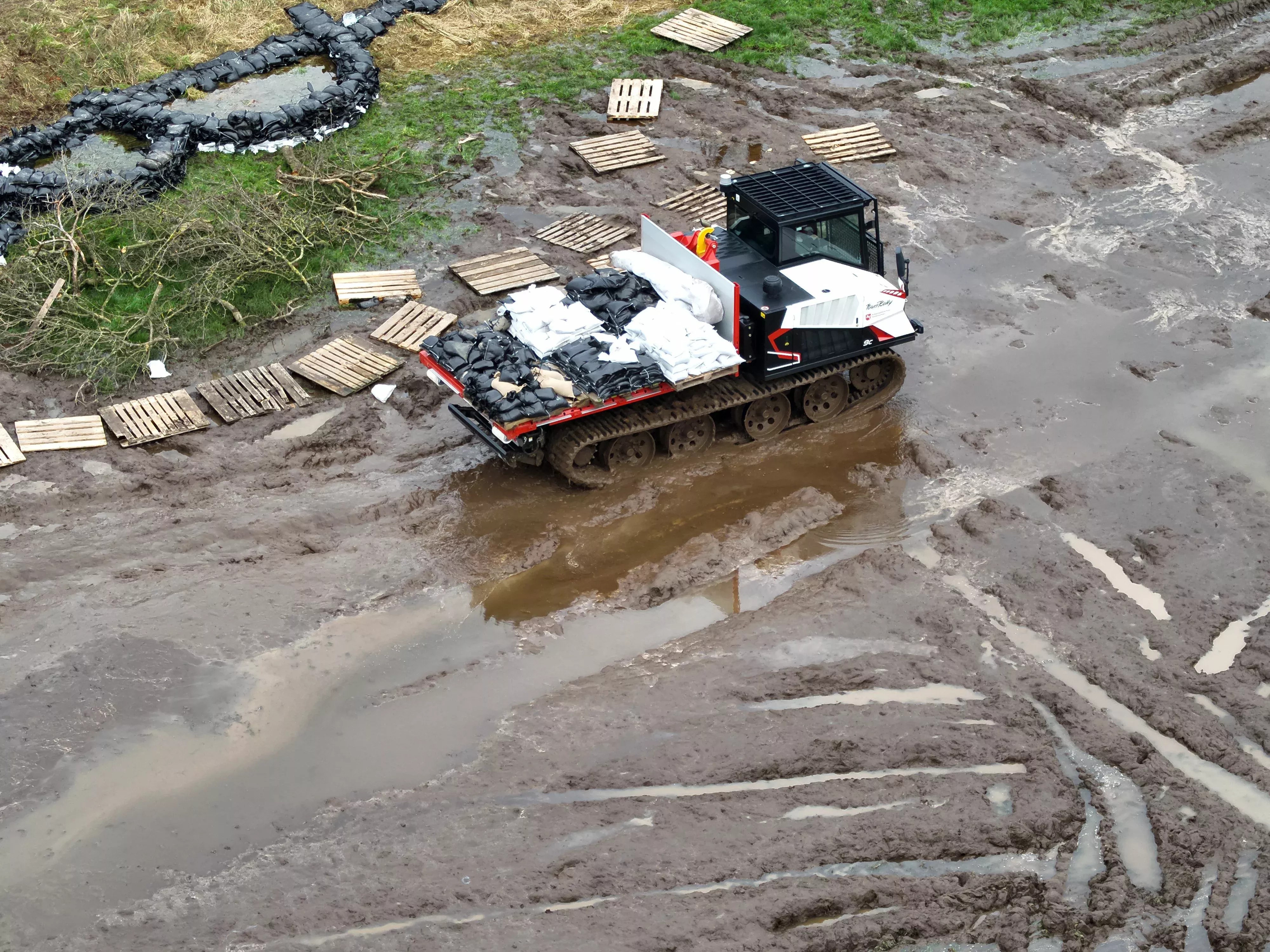PowerBully used in flood conditions
The tracked vehicles are used to transport sandbags on soaked ground.

Fotocredits: NLBK
Two PowerBully units are currently helping the Lower Saxony state office for fire and emergency services with flooding around the Aller river in the district of Celle. The tracked vehicles are used to transport sandbags on soaked ground.
Conventional emergency vehicles cannot get through
Continuous rainfall leads to flooding across large parts of Germany. Flooded streets and soaked ground prevent the use of conventional emergency vehicles and make transporting aid and resources difficult. To continue providing aid and securing dikes, the Lower Saxony state office for fire and emergency services (Niedersächsische Landesamt für Brand- und Katastrophenschutz, NLBK) is relying on the PowerBully 9C – the first tracked vehicle of its kind in disaster control – as well as an additional PowerBully 12D.
Built for extreme situations
If soft soil with a low bearing capacity makes travel difficult for wheeled vehicles, special vehicles are needed. The large footprint of its rubber tracks gives the PowerBully high traction while exerting minimal ground pressure of 0.19 kg/cm², which is many times lower than that of wheeled vehicles. With a wading depth of 1.30 m, the tracked vehicles can also reach flooded sites and thus make it possible to transport relief supplies and necessary resources.
PowerBully in Lower Saxony
Two PowerBully models from Kässbohrer are currently in use in Lower Saxony: The PowerBully 9C was handed over to the NLBK last year. The vehicle, which has a payload of 9 t, is equipped with a hook lift and loading platform with removable side walls. This design is now being used to transport sandbags to secure softened dikes. The second vehicle available to transport aid is a PowerBully 12D, which has a dump body and a payload of 11.5 t.

Fotocredits: NLBK

Fotocredits: NLBK